Elements Involved in the Rsv3-Mediated Extreme Resistance against an Avirulent Strain of Soybean Mosaic Virus
- PMID: 30355968
- PMCID: PMC6267276
- DOI: 10.3390/v10110581
Elements Involved in the Rsv3-Mediated Extreme Resistance against an Avirulent Strain of Soybean Mosaic Virus
Abstract
Extreme resistance (ER) is a type of R-gene-mediated resistance that rapidly induces a symptomless resistance phenotype, which is different from the phenotypical R-resistance manifested by the programmed cell death, accumulation of reactive oxygen species, and hypersensitive response. The Rsv3 gene in soybean cultivar L29 is responsible for ER against the avirulent strain G5H of soybean mosaic virus (SMV), but is ineffective against the virulent strain G7H. Rsv3-mediated ER is achieved through the rapid accumulation of callose, which arrests SMV-G5H at the point of infection. Callose accumulation, however, may not be the lone mechanism of this ER. Analyses of RNA-seq data obtained from infected soybean plants revealed a rapid induction of the abscisic acid pathway at 8 h post infection (hpi) in response to G5H but not to G7H, which resulted in the down-regulation of transcripts encoding β-1,3 glucanases that degrade callose in G5H-infected but not G7H-infected plants. In addition, parts of the autophagy and the small interfering (si) RNA pathways were temporally up-regulated at 24 hpi in response to G5H but not in response to G7H. The jasmonic acid (JA) pathway and many WRKY factors were clearly up-regulated only in G7H-infected plants. These results suggest that ER against SMV-G5H is achieved through the quick and temporary induction of ABA, autophagy, and the siRNA pathways, which rapidly eliminate G5H. The results also suggest that suppression of the JA pathway in the case of G5H is important for the Rsv3-mediated ER.
Keywords: Rsv3; extreme resistance; signal transduction pathways; soybean mosaic virus.
Conflict of interest statement
The authors declare no conflict of interest. The funding sponsors had no role in the design of the study; in the collection, analyses, or interpretation of data; in the writing of the manuscript, and in the decision to publish the results.
Figures
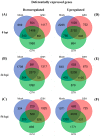
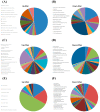
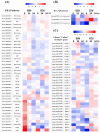

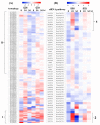
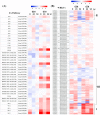
Similar articles
-
An Avirulent Strain of Soybean Mosaic Virus Reverses the Defensive Effect of Abscisic Acid in a Susceptible Soybean Cultivar.Viruses. 2019 Sep 19;11(9):879. doi: 10.3390/v11090879. Viruses. 2019. PMID: 31546878 Free PMC article.
-
Strain-specific cylindrical inclusion protein of soybean mosaic virus elicits extreme resistance and a lethal systemic hypersensitive response in two resistant soybean cultivars.Mol Plant Microbe Interact. 2009 Sep;22(9):1151-9. doi: 10.1094/MPMI-22-9-1151. Mol Plant Microbe Interact. 2009. PMID: 19656049
-
A transcriptional regulatory network of Rsv3-mediated extreme resistance against Soybean mosaic virus.PLoS One. 2020 Apr 21;15(4):e0231658. doi: 10.1371/journal.pone.0231658. eCollection 2020. PLoS One. 2020. PMID: 32315334 Free PMC article.
-
Photosynthesis-related genes induce resistance against soybean mosaic virus: Evidence for involvement of the RNA silencing pathway.Mol Plant Pathol. 2022 Apr;23(4):543-560. doi: 10.1111/mpp.13177. Epub 2021 Dec 28. Mol Plant Pathol. 2022. PMID: 34962034 Free PMC article.
-
Decades of Genetic Research on Soybean mosaic virus Resistance in Soybean.Viruses. 2022 May 24;14(6):1122. doi: 10.3390/v14061122. Viruses. 2022. PMID: 35746594 Free PMC article. Review.
Cited by
-
Soybean Resistance to Soybean Mosaic Virus.Plants (Basel). 2020 Feb 8;9(2):219. doi: 10.3390/plants9020219. Plants (Basel). 2020. PMID: 32046350 Free PMC article. Review.
-
Effect of virus infection on the secondary metabolite production and phytohormone biosynthesis in plants.3 Biotech. 2020 Dec;10(12):547. doi: 10.1007/s13205-020-02541-6. Epub 2020 Nov 24. 3 Biotech. 2020. PMID: 33269181 Free PMC article. Review.
-
Emerging Roles of β-Glucanases in Plant Development and Adaptative Responses.Plants (Basel). 2022 Apr 20;11(9):1119. doi: 10.3390/plants11091119. Plants (Basel). 2022. PMID: 35567119 Free PMC article. Review.
-
Extreme Resistance to Viruses in Potato and Soybean.Front Plant Sci. 2021 Apr 6;12:658981. doi: 10.3389/fpls.2021.658981. eCollection 2021. Front Plant Sci. 2021. PMID: 33889169 Free PMC article. Review.
-
Viral synergism suppresses R gene-mediated resistance by impairing downstream defense mechanisms in soybean.Plant Physiol. 2023 Aug 3;192(4):3088-3105. doi: 10.1093/plphys/kiad255. Plant Physiol. 2023. PMID: 37099452 Free PMC article.
References
Publication types
MeSH terms
Substances
Supplementary concepts
LinkOut - more resources
Full Text Sources

